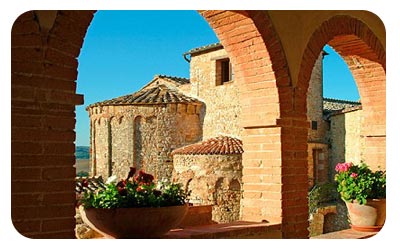Exploring the Camino Ancient Pilgrimage Roots
The Camino de Santiago has captivated the hearts of pilgrims and travellers for centuries. Leading to the sacred site of Santiago de Compostela in northwestern Spain, where it is believed that the remains of Saint James the Apostle are buried, this ancient pilgrimage is steeped in history and spiritual significance. In this article, we will delve into some of the most popular routes: Camino Francés, Camino del Norte, Camino Portugués, Chemin du Puy, Via de la Plata, Camino Inglés, Camino Finisterre, Camino de Invierno, and Camino Espiritual Portugués.
Camino Francés
Starting in the French town of Saint-Jean-Pied-de-Port, the Camino Francés is perhaps the most famous and frequently travelled Ancient Pilgrimage route. Its historical significance is deep-rooted, dating back to medieval times when it was the primary passage for pilgrims coming from France and other parts of Europe. The route is about 780 kilometres long and passes through some of the most breathtaking scenery in Spain, including the Pyrenees and the wine region of La Rioja.
Camino del Norte
The Camino del Norte is the ‘Northern Way’ and follows Spain’s northern coastline. This route was particularly important during the times when the Muslim Moors occupied much of southern Spain, making the southern routes less accessible to Christian pilgrims. The Camino del Norte offers stunning views of the sea and mountains but is also known for its challenging terrains.
Camino Portugués
Starting in Lisbon, Portugal, the Camino Portugués has become increasingly popular over the years. It was historically the choice for Portuguese royalty and other notables. This route highlights the close cultural and religious ties between Portugal and Spain, as pilgrims cross the border into Galicia, eventually reaching Santiago de Compostela.
Chemin du Puy
Also known as the Le Puy Route, this Camino begins in Le Puy-en-Velay in central France. It’s one of the oldest routes, with historical records going back to the 10th century. This route was highly popular among French pilgrims and nobility and showcases the diverse landscapes of southern France before joining the Camino Francés in Spain.
Via de la Plata
The Via de la Plata or ‘The Silver Route’ starts in the southern Spanish city of Seville and was originally a Roman road linking the silver mines of the north with the ports of the south. This long and less frequented route takes pilgrims through the untouched beauty of rural Spain. Historically, it was an important alternative for those coming from the southern and western parts of the Iberian Peninsula.
Camino Inglés
The Camino Inglés, or ‘The English Way’, starts in the ports of Ferrol or A Coruña in northern Spain. This route was primarily used by British and Irish pilgrims who would arrive by boat to these ports. It’s one of the shorter Camino routes but holds historical significance as the path of early British pilgrims.
Camino Finisterre
The Camino Finisterre, or ‘The Way to the End of the World’, is unique as it starts in Santiago de Compostela and ends at Cape Finisterre. In ancient times, people believed this to be the end of the known world. This Ancient Pilgrimage route is often taken as an epilogue by pilgrims who want to extend their journey to the sea, where they can reflect and conclude their pilgrimage.
Camino de Invierno
The ‘Winter Way‘ is an alternative to the Camino Francés, specifically used to avoid the snowy passages of the Pyrenees. This lesser-known path holds a mystical allure and offers the beauty of Spain’s interior landscapes.
Camino Espiritual Portugués
This is a variant of the Camino Portugués and is often referred to as the ‘Spiritual Way‘ or the ‘Translatio Route’. It retraces the journey of Saint James’ remains from Jerusalem to Santiago de Compostela by sea, culminating in a boat journey along the Ría de Arousa and the Ulla river.
Each Camino de Santiago Ancient pilgrimage route offers its own unique set of experiences, landscapes, and historical significances. Whether you are drawn by the call of history, adventure, or spiritual exploration, there’s a route that resonates with your quest. From royal pathways to rugged coastal trails, the Camino invites you to partake in a journey that has enlightened souls for centuries. Regardless of which path you choose, the destination remains the same: Santiago de Compostela, a timeless sanctuary that calls to people from all walks of life.
Contact us for more information.
